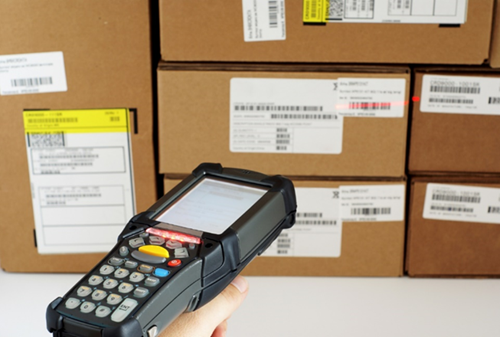Seleziona la tua posizione e lingua per fruire al meglio del sito web

While variety may be the spice of life, it's the enemy of efficiency. When labeling processes are not standardized throughout your company, it makes it difficult to keep all of the label information the same. Looking for labeling standardization? We’ve got you covered with three labeling best practices to help your company achieve its labeling goal of having everyone label the same way, which ultimately standardizes the labeling process across your company.
Rather talk to an expert about labeling standardization? Get in touch with a TEKLYNX team member to assess your current labeling process for possible efficiencies.
In this blog, we will discuss the three labeling best practices to help your company realize labeling standardization. Let's start with the easiest way to do this, which is to collaborate!

Who does what in the labeling process? This question can easily be answered (and accountability distributed) by defining who designs, who approves, and who prints.
User roles are straightforward and key to the success of standardizing the labeling process. Now that the print users in the labeling process have defined roles, the next best practice focuses on giving clear guidelines.
The simplest way to get everyone to label the same is to work with those involved in the labeling process to create an approval process. Most importantly, this approval process must be enforced, or else it won't be effective. A common labeling process may look like this: a product manager designs the first draft of the label. Then, a compliance specialist approves or denies it for regulation compliance. Next, a marketing manager reviews the label for appropriate branding. Finally, a production line worker prints the label. TEKLYNX offers LABEL ARCHIVE label security and traceability software that facilitates a streamlined approval process, which comes in handy if your company's labeling process involves multiple steps and touch points with different departments within your company.
After the approval process has been created and enforced, the next best practice to continue standardizing your labeling process takes into account the technology used.

If your company uses scales, scanners, PLC’s (Programmable Logic Controllers), keyboards, printers, or virtually any other device that can communicate through a serial port, USB port, or TCPIP, you have the potential to standardize your labeling process by integrating these tools with your labeling software. For example, hook your scale up to a computer and send the weight of the product directly to the label with CODESOFT Enterprise label design software feature, PortWatch. For a scanner, just print a barcode on the order sheet and have a user scan it into a database; the database will ensure the correct record is selected. By integrating your hardware with your labeling software, you can easily automate different steps in the labeling process. Just think, by using your scanner, you can trigger a print request or send data to a system without any manual processes. Removing the manual steps from your labeling process takes out any differences in the way employees at your company design and print labels.
Labeling standardization allows for maximum efficiency in the labeling process because when everyone does it the same way, there is little room for error. The best practices in this article, along with other strategies to help your company barcode better, can be found in TEKLYNX Best Practices for Barcode Labeling eBook. By following the best practices of defining user roles, setting up an approval process, and integrating labeling software with hardware, your company is moving towards label standardization.
Travis Wayne is the Product Manager at TEKLYNX. Travis applies his 20+ years of IT and health sciences experience to empower businesses to streamline operations and barcode better by applying software and technology. He works to continually improve TEKLYNX strategic planning, product and project management principles, and cross-functional communications. When not working, he enjoys many outdoor activities with his wife and two children.
One of manufacturing's biggest fears is a product recall - not only because of the potential for bad PR, but because of the wasted product, money, time, and potential safety risks for the users of their products.
READ MORE
A common labeling challenge I’ve been hearing recently is the need to move toward a paperless label approval process. Instead of printing out sample labels, physically delivering them to each person in the approval process, and returning to the label design software to implement changes, companies are looking to digitally transform this process and make label approval paperless.
READ MORE
Companies that need to print labels at multiple locations face unique challenges. All printed labels should follow the same format and contain the same accurate data. However, that’s not always the reality if labeling software is not integrated and standardized across all locations.
READ MORE© Copyright 2025 TEKLYNX CORPORATION SAS. Tutti i diritti riservati.
What do you think? Leave us a comment.
Comments will be reviewed and are subject to TEKLYNX’ comment policy. Your email address will not be published publicly.